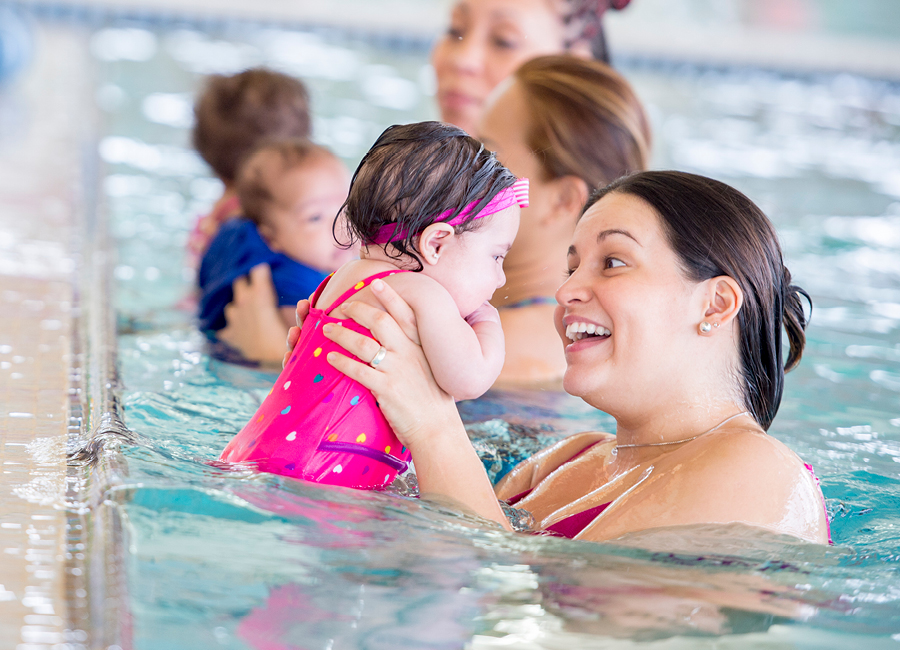24 Jun Emollients and Swimming

The sun is out and summer is finally here. That’s great news for our mood and for planning barbeque weekends! Yet, holidays spent in and out of the water can be challenging for the skin. Which is why emollients and swimming make a perfect match.
Some people with dry skin conditions like eczema find that their skin is irritated by swimming pool water. It’s all linked to the mix of chemicals used to keep the pool clean and infection free. That doesn’t mean you shouldn’t take a dip; swimming is great for fun and fitness. However it’s sensible to take a little more care of your skin to prevent any flare-ups.
Swimming and eczema
There are several reasons that pool water may trigger your eczema. However, everyone is different and their skin will respond in different ways. Not everyone will experience skin irritation after swimming, whilst some will be severely affected. It’s all down to your individual make up.
A question of chemicals: It’s important that the water in all swimming pools stays clean, safe and hygienic. In the UK, this is often achieved by the addition of chlorine or sometimes bromine. Elsewhere in the world, salt-water chlorination is used which is meant to be gentler on the skin and the eyes.
You may find that one, all, or none of these chemicals irritate your skin. Instead, it’s a matter of trial and error. The higher the chlorine concentration, the greater the risk of flare-ups. If you’re struggling at a public pool, it’s a good idea to ask when chlorine is added. You can then avoid visiting the pool at that time of day.
Pools and pH: The skin can become drier if the pH of the water is too high. This can happen if the chemical balance isn’t right or if the local water is hard. Hard water means it has lots of base salts and is more alkaline.
Managing your eczema
The good news is, with care, you should be able to enjoy a swim and keep your eczema under control by:
Taking a trial dip
Local water and different chemical cleaners can all affect your eczema in different ways. Take a short swim, to test your reaction to the water. If you notice a flare-up consider transferring to another pool, or increasing your emollient use.
Applying emollients and swimming
The regular use of emollients such as AproDerm® can decrease skin dryness, itching and reduce the frequency of eczema flare-ups. Emollients form a protective layer over the skin, which moisturises and reduces water loss. Applying an emollient before swimming can help lock in moisture and counteract the drying effects of the pool chemicals. If you have eczema or your skin is prone to dryness and sensitivity, it’s a good idea to be pro-active. This will ensure you reduce the risk of your skin getting itchy and inflamed.
Apply your AproDerm® emollient before and after you go for a swim for extra benefit. There’s evidence that putting emollient on when the skin is still damp can increase the effect. So make sure to keep some emollient close at hand when you go for a dip.
Rinse and go
The longer the chemicals stay in contact with your skin, the more time they have to cause irritation. In an indoor pool, there will also be chemicals in the air, so don’t hang around once you’ve finished your swim. Its best to immediately rinse away any chemicals in a shower. In addition, don’t forget to slather on a generous amount of your leave-on emollient.
Staying soap free
Soaps and shower gels can strip the skin of natural oils and irritate delicate skin. They’re also likely to contain fragrances, colourants and chemicals that can sensitise the skin.
If you’re showering before or after swimming, stay away from soap and use AproDerm® Colloidal Oat Cream or AproDerm® Emollient Cream instead. They are both emollient soap substitutes that will get you clean without dehydrating your skin.
Taking care during flare-ups
Avoid swimming if your eczema is severely inflamed or infected, it could make things worse. Instead, up your emollient use and see your doctor in case you need antibiotics or topical steroids.



Sorry, the comment form is closed at this time.